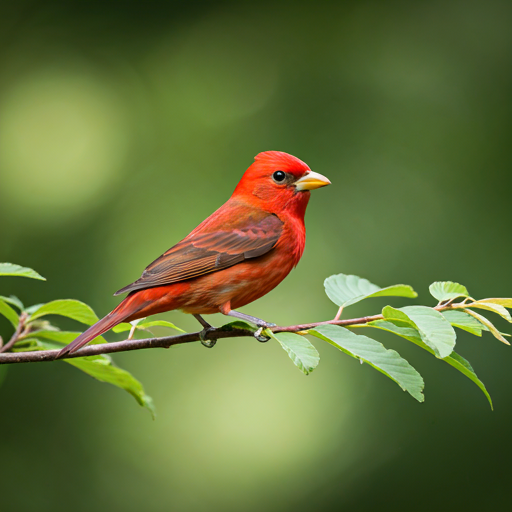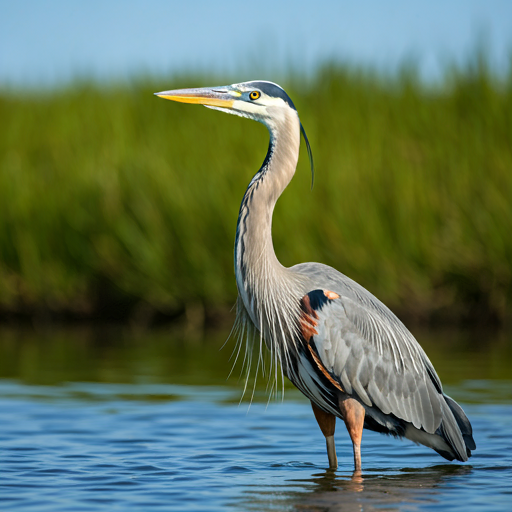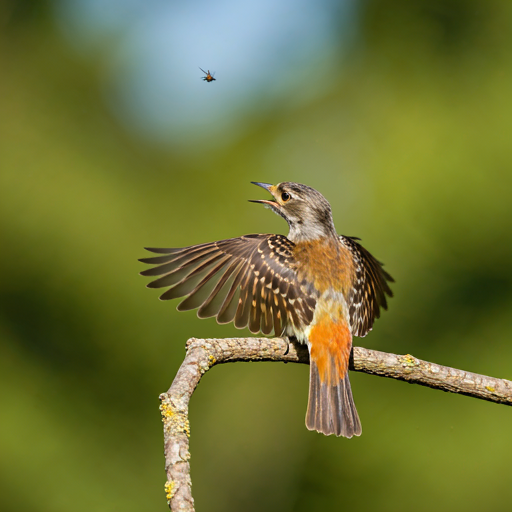Summer Birding at Sunkissed RV Village: A Symphony of Feathers
Nestled amidst the natural beauty of Summerfield, Florida, Sunkissed RV Village offers not only luxurious amenities but also the opportunity to immerse yourself in the vibrant world of summer birding. With its proximity to Carney Island Conservation and Recreation Area, Ocala National Forest, and Silver Springs, our RV village provides the perfect basecamp for birdwatchers of all experience levels.
Avian Gems of Summerfield
Summer is a fantastic time for birding in Florida, as many resident species are busy raising their young. Here are some of the feathered friends you might encounter during your stay at Sunkissed RV Village:
- Summer Tanager: This vibrant songbird, with its fiery red plumage, is a common sight in Florida during the summer months. Keep an eye out for them flitting through the trees, searching for insects.
- Eastern Wood-Pewee: These small flycatchers are adept at catching insects in mid-air. Their distinctive two-syllable call, often described as a “pee-wee,” will help you identify them.
- Great Blue Heron: A majestic wading bird, the Great Blue Heron is a resident of Florida all year round. You might spot them stalking prey in the shallow waters around Carney Island or Silver Springs.
- Wood Duck: This stunning duck species, with its colorful plumage and crested head, is a resident breeder in Florida. Look for them in freshwater marshes and ponds near the RV village.
- Barred Owl: While owls are typically more active at night, you might be lucky enough to spot a Barred Owl perched on a branch during the day. Listen for their distinctive hooting calls at dusk.
Tips for Successful Summer Birding
- Bring binoculars and a field guide: A good pair of binoculars will allow you to get a closer look at the birds, while a field guide will help you identify them. There are many great field guides available, but for beginners, the National Audubon Society Field Guide to North American Birds is a popular choice.
- Dress comfortably and quietly: Wear comfortable clothing and shoes that will allow you to move around quietly without spooking the birds.
- Be patient and observant: Birding requires patience and observation skills. Take your time, scan the trees and bushes, and listen for bird calls.
- Explore different habitats: Different bird species prefer different habitats. Explore the various areas around Sunkissed RV Village, including wooded areas, ponds, and open fields.
Beyond Birding at Sunkissed RV Village
While birdwatching is a delightful activity at Sunkissed RV Village, our RV village offers a wealth of other amenities to make your stay enjoyable. Relax by the heated pool, challenge your friends to a game of pickleball, or unwind in our spacious clubhouse.
We hope this blog post has piqued your interest in birding and exploring the natural wonders surrounding Sunkissed RV Village. For more information about the RV village or the local birdlife, please don’t hesitate to contact us.
External Link:
- Want to learn more about bird watching and birding apps? Check out this article from the Wall Street Journal: Bird-Watching Apps: A Beginner’s Guide to Taking Your Birding Hobby Digital
Here’s some birds you might find around Sunkissed RV Village.
The bird in the image below is a Summer Tanager.
Here are some of the key characteristics that help identify it:
- Bright red plumage: The male Summer Tanager is known for its vibrant red coloration, which is particularly striking against the green foliage.
- Black wings: The wings are black, providing a nice contrast to the red body.
- Large size: It’s a relatively large songbird, about the size of a robin.
- Habitat: Summer Tanagers are commonly found in deciduous woodlands, often near water.

The bird in the image is a Great Blue Heron.
Here are some of the key characteristics that help identify it:
- Large size: It’s one of the largest North American herons.
- Gray plumage: The overall plumage is gray, with a white underside.
- Long neck and legs: The long neck and legs are characteristic of herons and allow them to wade in shallow water.
- Yellow beak: The beak is long and yellow.
- Habitat: Great Blue Herons are found in a variety of wetland habitats, including marshes, ponds, and lakes.

The bird in the image is an Eastern Wood-Pewee.
Here are some of the key characteristics that help identify it:
- Grayish-olive plumage: The overall plumage is a grayish-olive color.
- Large size: It’s a relatively large flycatcher.
- Flycatching behavior: As shown in the image, it’s often seen perched on a branch, waiting to catch insects in mid-air.
- Habitat: Eastern Wood-Pewees are found in deciduous woodlands, often near water.

